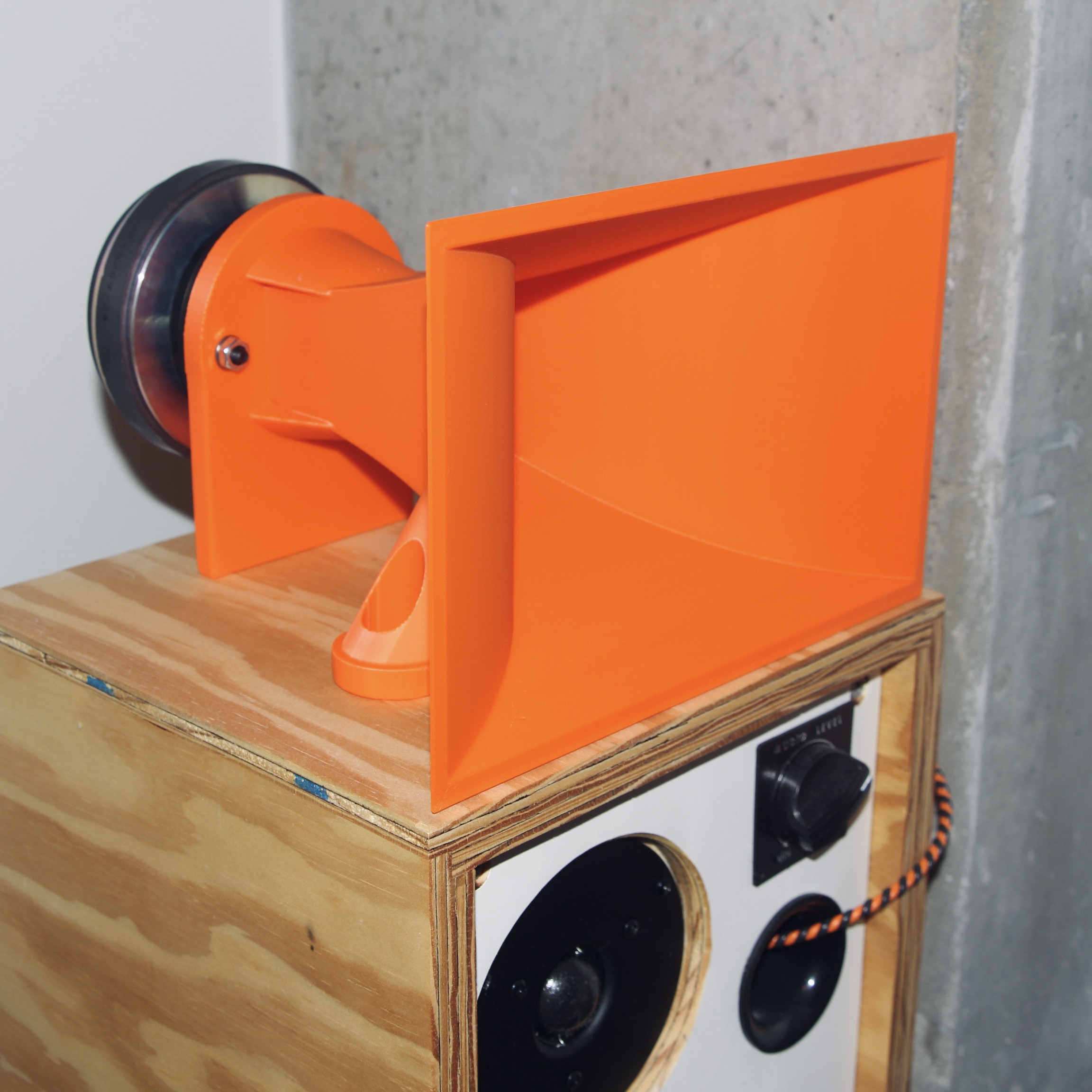Horn PROTOTYPE Rev. 1
Further Project Details
Introduction
Initial horn design for loudspeakers. This utilized the combination of FEM and ML to optimize the design.
Design Summary
Hundreds of Helmholts FEM simulations were ran on various parameters/geometries to build a metamodel. Once that model was trained, it was used to predict the performance of new designs. A final design was selected on the pareto front that balanced the trade-offs between the objective functions. LOOK AT THE PDF ABOVE FOR MORE DETAILS ON THE DESIGN PROCESS.

Geometry
An open source CAE framework called PicoGK was used to create the geometry. Being coded in C#, this allowed for the geometry to be created in a more flexible way. I created it so that all I had to do was input the various parameters of the design (length, widht, height, flare constants, etc.) in both vertical and horizontal directions. This allowed me to test various designs on the pareto front without having to manually create each geometry.
Manufacturing
The geometry was exported from PicoGk and was 3D printed. Took roughly 15 hours to print.

Flaws and Future Improvements
The main drawback to this design is the fact that it was created using a 2D FEM simulation. A 2D planar analysis assumes the structure extends infinitely in the out-of-plane (Z) direction, which does not accurately represent a real 3D horn geometry. Because of this limitation, I had to run separate simulations for the horizontal and vertical orientations. These two analyses act independently and do not capture the true coupled 3D behavior of the structure, which is not good. The solution to this is a 2D axis-symmetric model or a 3D FEM/BEM model. As of now I am currently testing out a 3D BEM Hemlholts simulation that does not require the entire domain, including the far-field region, to be meshed like a standard FEM simulation. Another thing is that I capped the frequency sweep at 10kHz, which typical systems extend to 20kHz. The reason for this is that it took too dadgum long to run the FEM simulations at the higher frequencies with a mesh that fine. For reference, it took just under 12 hours to run the training data for this metamodel.